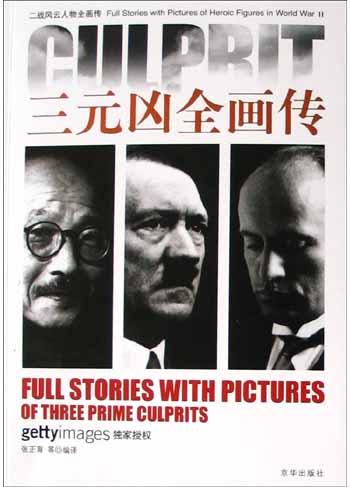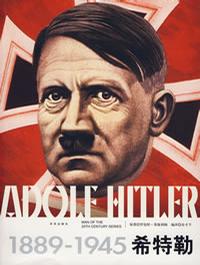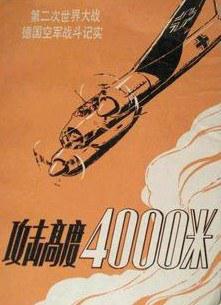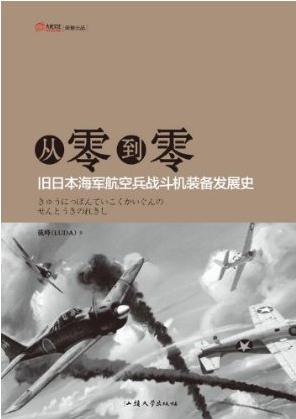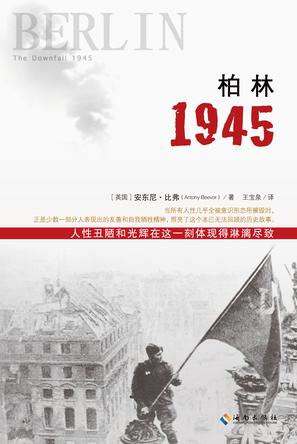欢迎来到相识电子书!
标签:二战
-
三元凶全画传
二战风云人物全画传。 《三元凶全画传》一书记录了嗜血恶魔希特勒、法西斯魔鬼的缔造者墨索里尼和杀人狂徒东条英机的残忍而暴虐的一生,详尽记述了他们曾经为满足一已私欲而对全人类犯下滔天罪行的全部经过。该书通过丰富的文字资料和宝贵的历史图片,全景式再现了他们在历史事件中最重要的时刻和最精彩的细节。与文字同样精彩的图片,记录了他们最具个性的瞬间,弥补了文字无法表达和描述的历史的细节。文字与图片的有机结合,会使读者仿佛置身于一个真实的历史环境当中,身临其境地去感受历史的变换和人世的沧桑…… -
希特勒
以一个落魄的街头流浪汉混到德车有名的工人党党员,并且还爬到了德意志最高元首的宝座,最后成为欧洲霸主和摧残世界的一代战争魔王。这的确是个传奇得不能再传奇的人物了,这个人就是泼皮无赖的独裁者,人称灾难煞星、杀人魔王——阿道夫·希特勒。然而,更让人惊奇的是,这位没有出生证明的私生子的儿子,却一手策划制造出灾难全人类的第二次世界大战。 本书语言生动,绘声绘色,以时间为线索展示了希特勒的一生。同时,本书还披露了一些鲜人知的希氏秘闻,如“希特勒到底是怎样的一个人物?”“他为什么仇恨和大肆屠杀犹太人?”“他与俾斯麦、拿破仑有何区别?”等等,相信读者阅后会对二战怪魔希特勒有个全面、彻底的了解。 -
登陆诺曼底
人类历史上迄今为止规模最大、持续时间最长的登陆战役。西欧战场上最为激烈、伤亡最为惨重的战役之一。二战中参加兵种最多的诸军兵种联合战役。 为了在西欧开辟第二战场,同盟国的领袖们费尽心机,最终共同的使命将他们团结在了一起。随着“霸王行动”的展开,神兵天降,一场人类战争史上规模最大的登陆战开幕了!德国人苦心经营的“大西洋壁垒”在盟军的勇猛冲击下崩溃了。开辟第二战场为何一再推迟?巴黎如何虚张声势,上演骗局?隆美尔和伦德施泰特怎样不和?作者以明快的笔触向你展现了这一切…… -
攻击高度4000米
本书作者卡尤思·贝克尔在第二次世界大战时期一直在德军情报部门工作。本书是作者根据大量有关第二次世界大战的档案资料和许多参战者的回忆写成的。书中着眼于事实,比较详细地记述了第二次世界大战期间希特勒德国空军在几个主要战场上的战例,总结了成功的经验和失败的教训,对于帮助了解和研究第二次世界大战空战史,不失为一本有直接参考价值的资料。 -
天马蹄痕
徐華江將軍在抗戰期間,座機多次被擊中,甚至墜毀迫降,都能全身而退,加上個人十分喜歡攝影,只要情況許可,一定會攜帶照相機隨時攝取鏡頭,甚至出任務時我也會將珍貴畫面做成紀錄,加上有每日撰寫戰鬥日記的習慣,如今將他個人一些之經歷記於此書中,使讀者們能藉此書更加了解從前那一段戰亂的年代。 本書特色 第一手訪談考證和傳記本人第一手當時的戰鬥日記,外加上百張珍貴第一手照片。 -
盖世太保
《盖世太保:第三帝国的统治和暴政》内容简介:秘密国家警察作为“第三帝国”无所不能、无所不在的迫害机构继续生活在回忆里。可这幅四不像正确吗?《盖世太保:第三帝国的统治和暴政》在最新研究的基础上回答了这个问题。书中揭示了盖世太保的工作能力是多么信赖民众和国家行政机构的支持。这张迫害网络进入德国社会里的深度远远大过人们一九五四年之后想承认的。 -
第二次世界大战的起源
A·J·P·泰勒编著的这本《第二次世界大战的起源》探讨了第一次世界大战后的欧洲局势和各国外交政策,主张二战起源非希特勒和纳粹德国有计划的侵略,而是“根植于一战以后欧洲均势的更大破坏,直接源于各国政治家们事与愿违的忙中出错”,亦即英国、法国等国的外交失败所致。本书自1961年在英国出版以来引起广泛争论,至今仍有很大影响。 本书史料丰富,叙述周详,文笔优美,引人入胜。 -
二战秘史
本书关注二战正面战场之外的历史,把目光对准普通人的战争经历。内容包括沦陷国家的抵抗运动、情报工作,也包括盟军国家后方人们支持战争的行为,更包括轴心国家内部人们的抗争。全书资料翔实,分门别类,再配以图表,将之前人们不够重视的战场历史揭示了出来,是一部可读性和史料性兼具的作品。 这本著作既不同于那些关注二战战场上的各场战役、技术、将领及其军队的研究,也不同于那些集中于个体的领袖人物(比如希特勒、斯大林、罗斯福、丘吉尔等)或者国家的研究,它的考察对象是一些比较特殊的地区和场合,在那里两种不同的战争(反对轴心帝国的战争和争取权利的人民战争)能够比较容易地被观察和辨别。 ——唐尼·格拉克斯坦 -
从零到零
《从零到零:旧日本海军航空兵战斗机装备发展史》系统阐述了旧日本海军航空兵战斗机装备的发展历程,全面而具体的分析了其发展过程中的技术,战术与整体战略思想走向。为读者提供了全面而翔实的日本海军航空兵战斗机装备发展历程历程以及相关信息。 -
通往柏林之路
一位真正具有杰出才华的独立历史学家。 —— 迈克尔·霍华德 约翰·埃里克森掌握了大量资料,采访了诸多亲历者,完成了这部关于苏德战争的最为杰出的著作。 ——A. J. P. 泰勒,《观察家报》 一部不朽之作……日后,任何一部叙述苏德战争的著作都将参考埃里克森的细致研究和杰出叙述。 ——史蒂芬·T.罗斯,《海军军事学院评论》 每个有想法的军人和每个军事史研究者都该读读这本书。 ——《英国陆军评论》 埃里克森是我们当中最杰出的苏联军事史专家……也是二十世纪最重要的历史学家之一。毫无疑问,他的著作在可预见的未来将一直是关于苏联这段历史的权威之作。 ——迈克尔·帕里什,《美国历史评论》 约翰·埃里克森完成了有史以来最完整、最权威的苏德战争(1941—1945年)著作,继《通往斯大林格勒之路》后,埃里克森生动地描述了苏联红军在史诗般的战斗中将德寇逐出苏联国土的故事。本书阐述了直至苏联红军对纳粹德国本土发起突击、最终攻克柏林的一系列极其艰巨的战役,其规模之大是西方世界难以想象的。书中对这番激烈战斗中各场战役和行动的描写引人入胜,扣人心弦。 -
Savage Continent
Savage Continent: Europe in the Aftermath of World War Two, By Keith Lowe Brendan Simms In his memoir If This is a Man, the Italian writer Primo Levi recalls that the most terrifying time for him at Auschwitz was not the years of incarceration by the Nazis, when beatings, hunger, back-breaking work and the threat of murder were omnipresent. He came closest to despair during the vacuum between the flight of the guards and the arrival of the Red Army. This period, in which the prisoners were effectively left to their own devices, was characterised by a complete breakdown of all authority, however unjust, as well as the system of supply. I was reminded of these passages when reading Keith Lowe's Savage Continent: an excellent account of the two years or so between the end of hostilities in Europe with the defeat of Hitler, and the establishment of the Cold War order. As the author points out, the Second World War did not end in 1945. In large parts of the continent, the contest lasted a lot longer as Polish, Ukrainian, Baltic and Greek partisans battled on in the mountains and forests of Eastern Europe and the Mediterranean. Some of these stories, such as the post-war travails of the Greeks, are well known to Western audiences, but the activities of the Lithuanian, Latvian and Estonian anti-Soviet "Forest Brothers" are not. Perhaps the most arresting fact in this compelling book is that the last Estonian guerrilla fighter, August Sabbe, was killed as late as 1978, trying to escape capture. Even where there was no fighting, Lowe demonstrates, Europe was in flux. A contemporary observer described Germany, the crossroads of the continent, as "one huge ants' nest", in which everyone was on the move. There were refugees everywhere, some trying to escape the victors, others returning to their homes. Millions of German prisoners of war were crammed into insanitary Anglo-American camps in the West; and they were the lucky ones, unlike those captured by the Russians and taken to camps in Siberia, or murdered en route. Almost everywhere, the Nazi collapse was followed by a bloody settling of scores against real or alleged collaborators. Lowe shows that the numbers affected in places like France to have been much exaggerated by subsequent myth-makers; in Yugoslavia, on the other hand, the reckoning was truly horrific, the more so as British troops were actively involved in sending men and women back to face certain death at Tito's hands. All this was accompanied by the greatest population shifts in Europe since the Dark Ages. These had, of course, begun during the war. Lowe notes the huge void left by the Nazi murder of the Jews, but he points out that it was not so much the Holocaust itself as the persistence of anti-Semitism in places like Poland and Hungary which persuaded so many survivors to make for Israel or the US. In eastern Poland and western Ukraine, new borders led to a massive exchange of populations attended by great hardship and brutality. The principal post-war victims, however, were the Germans, systematically expelled by the Czechs and Poles from lands which they had settled for hundreds of years. Lowe describes these events too with admirable sensitivity, placing them squarely in the context of prior Nazi policies, without in any way justifying them. Europe was also in political flux. The war had destroyed the standing of the old elites, and brought the Red Army into the heart of the continent. It was Soviet power, rather than the failure of the ancien regime as such, which underpinned the wave of Communist takeovers in Eastern Europe. Lowe describes the Romanian case in fascinating detail. Hungary, Czechoslovakia, Poland and Bulgaria all met broadly similar fates: red terror, arrests, expropriation of land and property, and executions. In Greece, the boot was on the other foot, as the right-wing government parlayed first British then American help into brutal victory over the communists. Lowe notes the "unpleasant symmetry" caused by Cold War imperatives without in any way denying that "the capitalist model of politics was self-evidently more inclusive, more democratic and ultimately more successful than Stalinist communism". Savage Continent is thus a fitting title for this book, and surely also an allusion to Dark Continent, Mark Mazower's brilliant history of the 20th century. Lowe's vivid descriptions of Europeans scrambling for scraps of food, rampant theft and "destruction of morals" are a timely reminder that a certain humility is in order when we look at less fortunate continents today. The author is also right to remind us, with respect to current travails in Iraq and Afghanistan, just how long it took to rebuild Europe and for democracy to take root – or to return. That said, Lowe could perhaps have said more about the Europeans who emerged from the war with a new and uplifting vision: that the only way for the continent to prevent this from happening again, and to realise its full potential, was to chart a course towards greater unity. It was in the midst of the ruins described by this book that men such as Robert Schuman, Jean Monnet, Alcide de Gasperi and Altero Spinelli were taking the first steps towards what was to become the European Union. In this sense, Europe is a continent which contains not only the seeds of its self-destruction but also of its renewal. -
武神与将军
忠于元首,还是忠于国家?他们选择了后者…… 1933年,纳粹上台伊始,传统德国社会的精英们打破沉默,投入了一场义无反顾的抵抗运动。其后的十余年里,有据可查的反抗多达42次,无一例外,这些针对希特勒及其核心支持者的刺杀,均以失败告终。最后一次努力,也即1944年的“7?20政变”,失败后,遭逮捕的总人数超过7000人,将近5000人被处死。 参与抵抗运动的有地位显赫的将军和元帅,有备受重用的市长和大使,有超然世外的贵族和牧师,亦有普普通通的工人和大学生。 这是一场资源和组织能力极不对等的战斗,是个人对抗政权之战,也是一场注定要失败的抗争。 牺牲者以其鲜血保存了反思纳粹暴政的道德火种,为战后的德国乃至整个欧洲的精神重建提供了基石。“一粒麦子不落在地里死了,仍旧是一粒。若是死了,就结出许多子粒来。” -
柏林1945
主编推荐 1. 本书以战争中的真实人性打动了无数读者; 2. 动人的细节、惊心动魄的笔调,以及对历史真实而完整的叙述; 3. 对历史资料超凡的解读、对复杂的历史场景精确而迷人的构思。 《柏林1945》获得第一届今日朗文历史理事奖,被翻译成二十几种语言。借助最新解密的苏联档案,以及来自德国、美国、英国和法国等国家的历史资料,安东尼•比弗生动叙述了在第三帝国最后崩溃的日子里,众多平民和士兵,特别是女性所经受的梦魇般的厄运。在波澜壮阔的战争场面掩饰下,作者以口述历史的方式,记录了一个体验式的历史事件,而一部分人在极端时代表现出的友善和自我牺牲,照亮了这个本已无法回顾的历史故事。 -
天昏海暗
《天昏海暗:太平洋战争》内容简介:第一章偷袭珍珠满仓第二章通向珍珠港之路、第三章危机四伏、第四章以牙还牙、第五章航母大角逐第六章不沉的航空母舰、第七章死亡之岛、第八章剪除恶魔、第九章胜利的播种床第十章胜利在望、第十一章秋风扫落叶、第十二章耀眼的蘑菇云。 -
犁不开的冻土
《犁不开的冻土:莫斯科保卫战》内容主要包括:第一章画在纸上的和平、第二章红胡子“巴巴罗萨”、第三章沸沸扬扬掩杀机、第四章偷猎在拂晓、第五章疯狂、第六章前哨,丢失了大片国土、第七章莫斯科!世界屏住气息第八章撼不动的红都、第九章胜利的曙光。
热门标签
下载排行榜
- 1 梦的解析:最佳译本
- 2 李鸿章全传
- 3 淡定的智慧
- 4 心理操控术
- 5 哈佛口才课
- 6 俗世奇人
- 7 日瓦戈医生
- 8 笑死你的逻辑学
- 9 历史老师没教过的历史
- 10 1分钟和陌生人成为朋友

